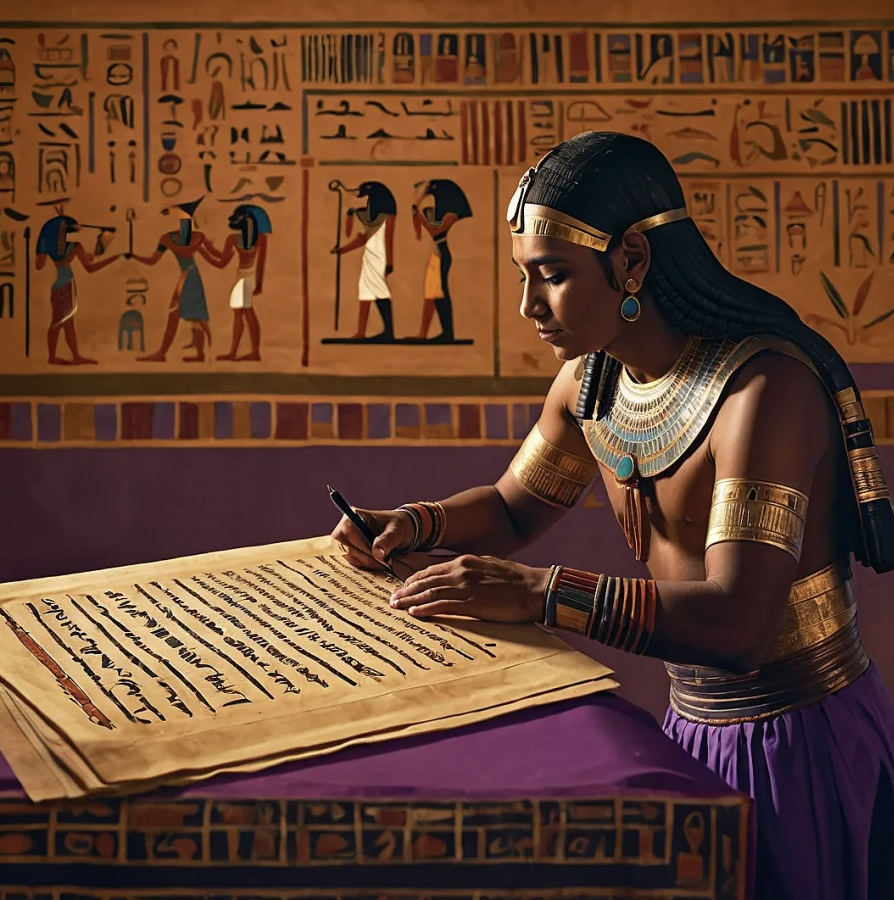Should I write an NFT book?
That’s not just the blog post’s title, but an actual question I’m posing to myself as I write this. At Legerly, we offer writers the possibility of minting their published or unpublished manuscripts as NFTs, but is it really necessary to do this to stand out as an author?
I daresay, yes. It is. And that’s what I’ll explain
But why?
J.K. Rowling became a bestselling author before Google was founded. Stephen King became a household name before the Internet was invented.
And still, having a digital presence as an aspiring or established author is more important today than ever.
So, here’s why I believe you should write an NFT book.
What Counts as an NFT Book?
First things first: what really is an NFT book? Is it just a PDF that’s been minted in OpenSea?
Well, not exactly, since you can’t really mint PDFs on their marketplace, or on many others.
As a matter of fact, Web3 isn’t the most friendly environment for exclusively readable content.
But things are quickly changing. More and more platforms are accepting ePub & PDF files as mintable material to become an NFT.
So, an NFT book is basically any PDF, epub or readable format file that can be minted as an NFT seamlessly, and that can be purchased without any additional complications. Not all marketplaces offer this option, but more and more, like Legerly, are integrating them as part of their offerings.
So, now that we’ve laid the groundwork, let’s tackle the next hot question if you’re sold on the idea of writing an NFT book.
What Genre Should I Write For an NFT Book?
This might seem like a silly question. Wouldn’t just writing any genre you pleased work to sell your book?
Well, as a matter of fact, it’s not so simple. In Web2 book marketplaces like Amazon, an aspiring author will likely research the hottest genres in the moment to know what genre and subgenre to write about.
Naturally, they’d gravitate toward the genre they love writing about, but if faced with ten options, they’d likely choose the one they enjoy most and also know has a good chance of selling.
One of the bigger selling points of NFT books is the capacity to bundle them with additional media, like video, illustration, music, and more. All books benefit from this one way or another, but it’s clear that some do so more than others.
Let’s get the obvious out of the way.
Fiction will almost always sell more than non-fiction on Web3.
This trend is largely due to the inherent appeal of fiction’s imaginative and interactive potential, which aligns perfectly with Web3’s capabilities. In the Web3 space, fiction genres like fantasy, science fiction, and horror can fully leverage NFTs to create rich, immersive experiences that captivate readers.
In contrast, non-fiction, while valuable, often relies more on straightforward text and factual information, which might not benefit as much from the added layers of interactivity and multimedia that Web3 offers. Although non-fiction can still find a niche in the Web3 world—especially if it includes unique elements like exclusive interviews or interactive data visualizations—the genre generally doesn’t take full advantage of the immersive potential that NFTs provide. Thus, fiction’s flexibility in integrating creative multimedia makes it a more natural fit for Web3’s innovative landscape, leading to higher sales and greater reader engagement.
Now that we have that out of the way, let’s go further below down the scale.
Fantasy and science fiction, and any other related spec-fic subgenres, benefit enormously from Web3’s ability to integrate immersive visuals, soundscapes, and even interactive world-building elements, creating a richer narrative experience that goes beyond the written text. Similarly, genres like horror can utilize Web3’s multimedia bundling to include atmospheric soundtracks or animated scenes, intensifying the reader’s engagement with the story.
Niche genres with dedicated fanbases, such as graphic novels or experimental literature, can take advantage of the limited edition and collectible nature of NFTs, offering exclusive content that resonates deeply with their audiences.
There will always be some major sellers like romance, which due to its very broad categorization, has fingers in all of the genres we already mentioned.
So, we can summarize the best genres to write about being:
- Fantasy
- Science Fiction
- Horror
- Graphic Novels
- Experimental Literature
Moving on to the next, what are the more tangible benefits of NFT books over Web2 books?
Benefits of NFT books Over Web2 Books
Let’s start with the obvious: an NFT book is practically indistinguishable from a self-published book when it comes to creative freedom and ownership. You won’t have to deal with the nonsense of a traditional editorial, but you’ll have to do your own marketing and more.
Unlike traditional publishing, where rights and royalties are often shared or limited by contracts, NFT books allow authors to retain complete ownership of their content. This means you decide how your book is presented, distributed, and monetized, without the constraints imposed by publishers or platforms.
But, unlike self-published book, you also won’t have to deal with the nonsense of publishing marketplaces like Amazon’s KDP, which, contrary to what most unpublished authors believe, also comes with its own set of restrictions.
Amazon KDP offers authors a straightforward and widely accessible platform for self-publishing, with the advantage of reaching a massive audience and simplified distribution. However, it comes with limitations like reduced creative control, lower royalty rates due to platform fees, and no ownership over the final product. In contrast, an NFT marketplace allows authors to retain full ownership and creative freedom, offering higher potential royalties through direct sales and secondary market transactions.
Of course, the NFT marketplace also comes with its own set of difficulties, namely, the more complex setup process, potentially limited audience reach, and the volatility associated with the cryptocurrency market.
With so many options to choose, many authors opt for a hybrid approach towards NFT book publishing and writing.
That’s what we’ll get into now.
The Hybrid Approach Towards NFT Books
The hybrid approach combines the strengths of both Web2 and NFT publishing, allowing authors to reach a broader audience through traditional platforms like Amazon KDP while also exploring the innovative potential of NFTs. This strategy provides the security and familiarity of Web2’s established market, ensuring steady income and visibility, while gradually introducing readers to the unique benefits of NFT books.
So, the approach I recommend is a dual strategy for both platforms: publishing special editions in Web3 while maintaining standard releases in Web2.
This offers authors a powerful way to differentiate their work and engage with audiences on multiple levels. In Web2, typical releases on platforms like Amazon provide readers with the basic text, but with Web3, authors can create unique, collectible NFT editions that go beyond the written word. These special editions can bundle additional content like exclusive artwork, behind-the-scenes videos, soundtracks, and even interactive elements directly within the NFT, offering an enriched, immersive experience that isn’t possible with standard eBook formats. Instead of scattering these files as separate downloads on marketplaces, Web3’s NFT technology seamlessly integrates them, creating a cohesive and enhanced narrative package. This approach allows authors to cater to traditional readers while simultaneously offering something truly unique to those interested in the future of digital publishing.
The downside, of course, is that you’ll have to learn how to manage two or more platforms, which can be time-consuming and complex, but it balances the risk of solely relying on NFTs with the immediate access to Web2’s larger audience. A fully NFT approach offers greater creative control and long-term revenue potential but risks limited reach during the current early adoption phase, whereas a purely Web2 approach sacrifices the unique ownership and collectible value NFTs provide.
The Bottom line
So, we can conclude that, adopting a hybrid approach—publishing standard releases in Web2 while experimenting with NFT editions in Web3—allows authors to reach a broader audience while exploring innovative, collectible formats until they pick up steam.
Choosing a spec fic genre seems to be the best approach to best leverage Web3’s capabilities, so if you like to write fantasy, horror, sci-fi or graphic novels, this might be another avenue of publication to explore.



